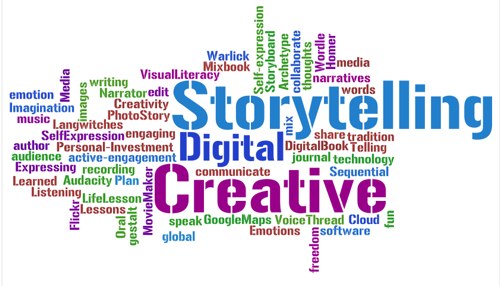In class we have learned about a lot of different types of digital stories and multimedia presentations. This next one is called a One Sentence Story which is essentially an entire story told in one sentence. Each individual slide has one word or a small part of the story and the pictures on the slide should represent what is said. Here is a link to how One Sentence Stories can be used in the classroom.
Different programs that you can use to create a One Sentence Story with are: animoto, powerpoint, photopeach, sonicpics (app), or haikudeck (available on web or as an app). For the purpose of this assignment I used haikudeck. I started by making an account, picking a theme, adding text, and then I added images. A nice feature with haikudeck is that you can search for images on the program and it searches through creative commons, so it automatically includes the image url. Since I could not think of a story to tell, I instead chose to take a quote and make that into a story. It was hard finding images that related to just one word, but I tried my best! Here it is:
Web Literacy Quiz
Our professor Mike also provided us with web literacy quiz to take so we could see how much we knew about web literacy. There were 13 questions and you could fall into 1 of 3 categories based on what you could answer ("Somewhat Savvy" 0-5 points, "Moderatley Savvy" 6-10 points, or "Downright Nerdy" 10+ points). Soooo, I took the quiz expecting to do good based on the amount of internet courses I have taken and the results were a little depressing! I recommend everyone to take the quiz, it will make you realize how much there is to learn about the web!
Our professor Mike also provided us with web literacy quiz to take so we could see how much we knew about web literacy. There were 13 questions and you could fall into 1 of 3 categories based on what you could answer ("Somewhat Savvy" 0-5 points, "Moderatley Savvy" 6-10 points, or "Downright Nerdy" 10+ points). Soooo, I took the quiz expecting to do good based on the amount of internet courses I have taken and the results were a little depressing! I recommend everyone to take the quiz, it will make you realize how much there is to learn about the web!


